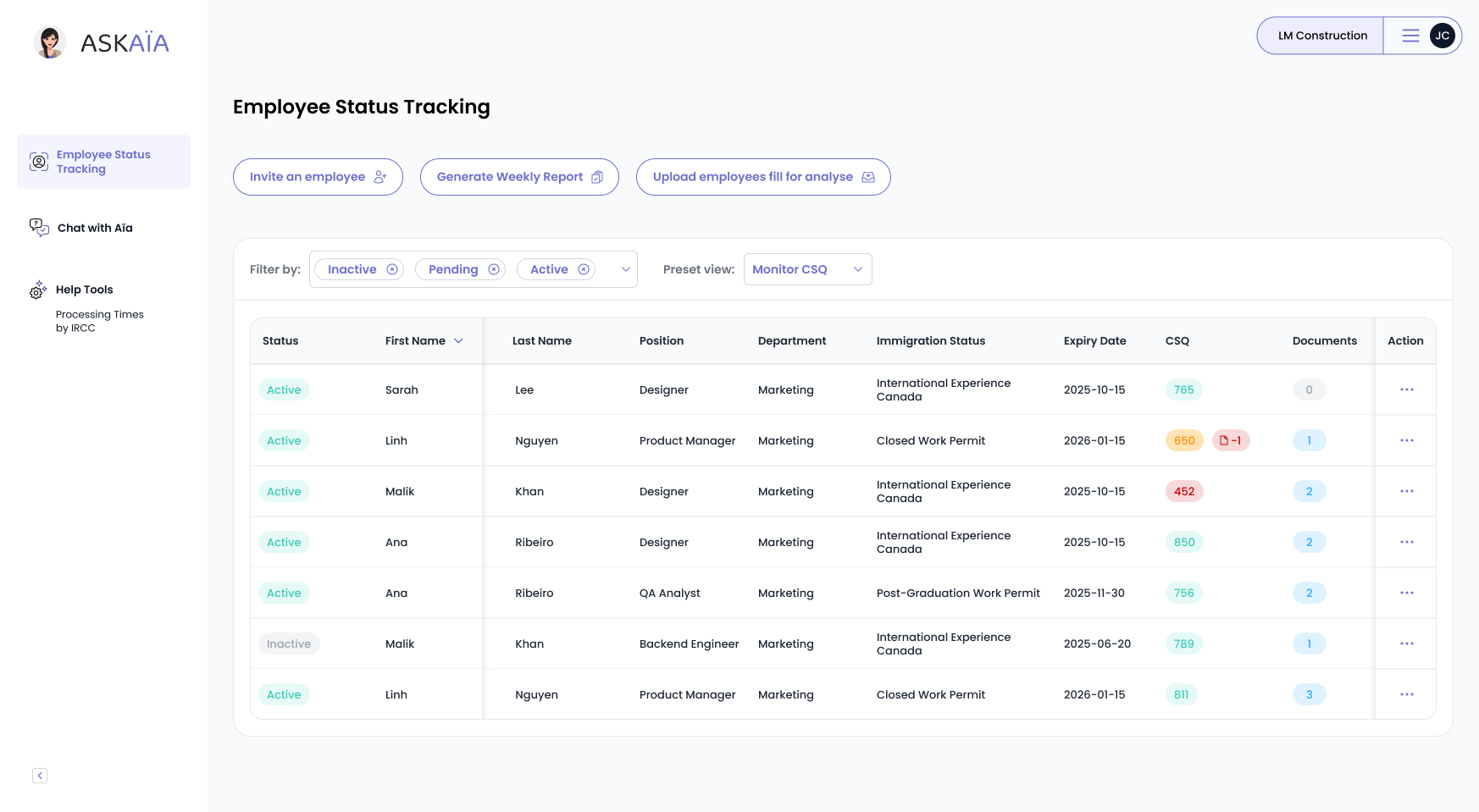As Canada recalibrates its immigration priorities, HR departments face a crucial inflection point. In 2025–2026, stricter LMIA rules could delay hiring plans, disrupt onboarding timelines, and even jeopardize access to international talent.
This article decodes the latest LMIA policy shifts and equips you with expert-backed, actionable strategies to stay compliant and competitive in the evolving hiring landscape.
Context: Canada Is Reshaping Its LMIA Landscape
The Labour Market Impact Assessment (LMIA) process is undergoing one of its most significant overhauls in a decade. Canada’s federal and provincial governments are tightening controls to curb low-wage job dependency and prioritize high-value roles.
In 2025, Ottawa introduced national intake caps, while sectoral freezes in Quebec and B.C. now target roles in food service, retail, and personal care.
Processing alert: LMIA wait times have increased to 10–12 weeks nationally, and up to 16 weeks in Quebec for low-wage roles.
This reshaping reflects Canada’s shift toward a more selective, skills-based labour market.
Implications for Employers & HR Teams
The days of reactive recruitment are over. HR must now embrace forecasting and compliance as essential components of workforce planning.
Audit activity has jumped 37% since 2023. Common triggers include wage discrepancies, poorly documented recruitment efforts, and NOC mismatches.
Organizations relying on foreign workers must budget more time and resources to navigate the LMIA process. Missing a sectoral window or misfiling paperwork could delay a critical hire by months.
Strategic HR leaders are now integrating immigration risk assessments into quarterly hiring reviews.
Impact on Immigration Pathways via LMIA
LMIA-backed job offers still unlock access to Express Entry and PNP programs, but the bar is higher. Candidates now need:
- Enhanced language scores (CLB 7+)
- Job offers that align with TEER 0–3 NOC categories
- Salaries meeting or exceeding regional medians
Companies serious about long-term retention must tailor roles that satisfy both operational needs and PR criteria. Many are also exploring LMIA-exempt pathways under CUSMA, ICT, or Mobilité Francophone streams to mitigate bottlenecks.
Policy Trends to Watch in 2025–2026
| Policy Area | 2024 | 2025–2026 Forecast |
| Intake Caps | Limited to select provinces | National caps in key sectors |
| Processing Times | 6–8 weeks (avg.) | 10–16 weeks (in some regions) |
| Sector Moratoriums | Rare | Québec, B.C. (low-wage jobs) |
| Audit Frequency | Moderate | High (+37% increase) |
| Salary Benchmark | NOC-based averages | Regional median wage required |
| PR Link via LMIA | Moderate CRS boost | Stricter NOC, language criteria |
Emerging patterns: Ottawa is favouring tech, trades, and healthcare. Employers in these sectors may benefit from faster processing and priority support.
Recommendations for HR Leaders
Be proactive, not reactive:
- Start LMIA recruitment 9–12 months in advance
- Audit-proof your files: Document job ads, interview notes, and wage justifications
- Use compliant job titles and NOC codes aligned with new TEER structure
Expand your options:
- Consider LMIA-exempt routes (e.g., CUSMA, Mobilité Francophone)
- Partner with licensed RCICs to ensure up-to-date filings and submissions
Book an Immigration Audit Call + Get the Work Permit Risk Playbook:
Schedule a free consultation with AskAïa to proactively assess your hiring practices. You’ll also receive our Work Permit Risk Playbook to support audit preparation and workforce continuity.
HR teams that align immigration compliance with long-term hiring strategy will stay ahead of this shifting terrain.

Let’s get your demo started
Book a demo
You May Also Like
These Related Stories

LMIA Streams 2025: Pick High-Wage, Low-Wage, or GTS Fast
Canada’s LMIA system now operates at two speeds: eight-day approvals for Global Talent Stream roles and months-long queues or outright freezes for man …

LMIA Job Ads 2025: Canada’s Compliance Rules HR Must Follow
A single missing word in a job posting can cost your LMIA application. For HR teams navigating Canada’s Temporary Foreign Worker Program (TFWP), getti …

New Home Care Worker Immigration Pilots 2025: Benefits for Canada
On February 26, 2025, Immigration, Refugees and Citizenship Canada (IRCC) unveiled details about two new immigration pilot programs for home care work …


